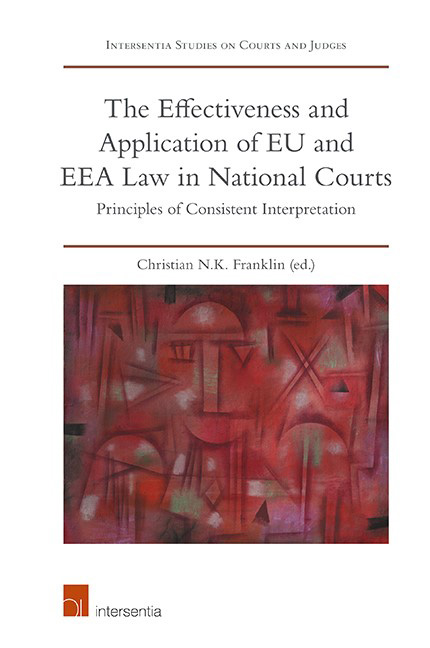 The Effectiveness and Application of EU and EEA Law in National Courts
The Effectiveness and Application of EU and EEA Law in National Courts Preface
Published online by Cambridge University Press: 31 January 2019
Summary
This book is the result of a research project borne of a combination of coincidence, curiosity and cooperation. As an English lawyer, I have lived and worked as an academic at the University of Bergen in Norway for many years now. Turning my hand from teaching EU law to EEA law, I was fascinated to see just how differently courts in the UK and Norway seemed to approach conflicts between national and EU/EEA law – particularly through the application of the principle of consistent interpretation. Casting my net a little further, I was further surprised how little I could find (in a language that I could master) on how courts in other EU/EEA countries have dealt with such conflicts. As it turned out, thankfully there were many other like-minded academic souls out there, at relatively similar stages in their careers, who shared my interest. Approaching potential contributors was made all the more easier given the timing of this project, which seems particularly ripe – not only in light of the book's EEA dimensions in the context of Brexit, but also considering the broader discussions raised over the past few years concerning the very dialogue and cooperation between the EU and EFTA Courts and national courts in practice.
Unlike many anthologies, this book represents a truly collaborative and cooperative effort. Core members of the project group were invited to a preparatory “kick-off“ seminar at the University of Bergen, where potential issues to be addressed by all of the participants were discussed, and a time-line for the project settled. Following the preparatory seminar, a comprehensive questionnaire was designed, setting out a multitude of potential research problems related to the reception of the principle of consistent interpretation. First draft contributions provided the basis for further discussion, reflection and debate at a fruitful, two-day workshop. The workshop in fact proved key to the entire process in the end, providing a tangible point of reference for developing our texts in a more cohesive and in-depth manner. As readers will note, the contributors were encouraged to write their contributions as academic articles rather than mere mechanical responses to the questions provided. The workshop also therefore helped to provide a stronger sense of direction and common purpose to our research.
- Type
- Chapter
- Information
- The Effectiveness and Application of EU and EEA Law in National CourtsPrinciples of Consistent Interpretation, pp. v - viPublisher: IntersentiaPrint publication year: 2018
